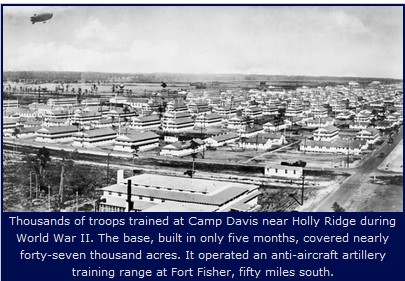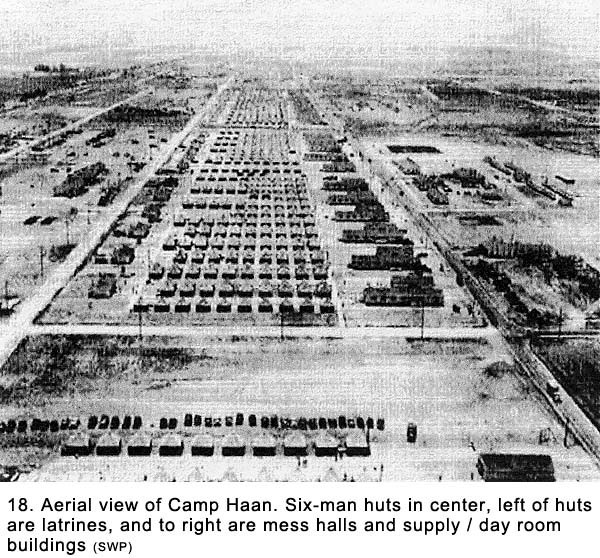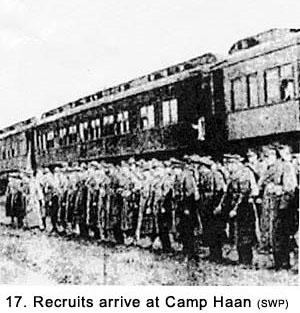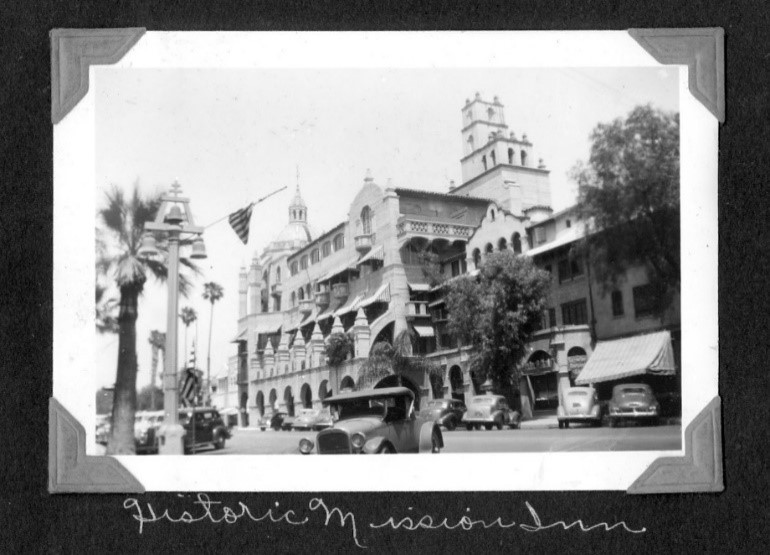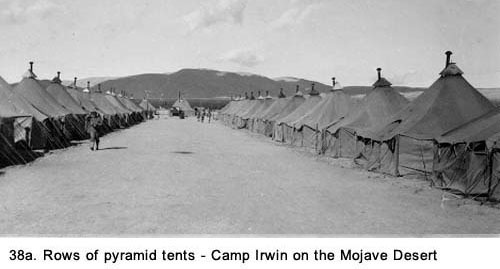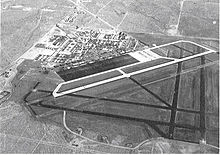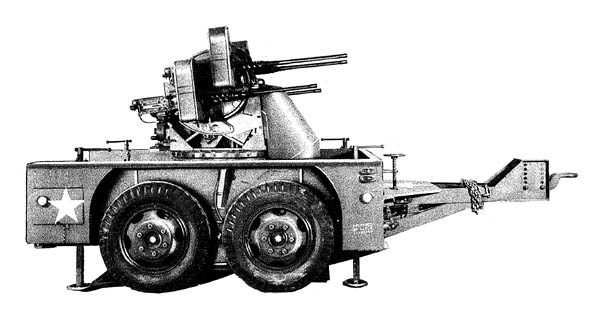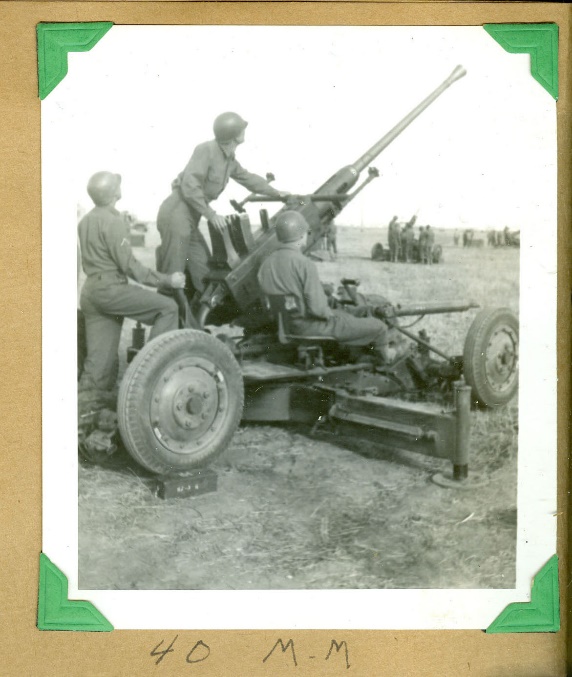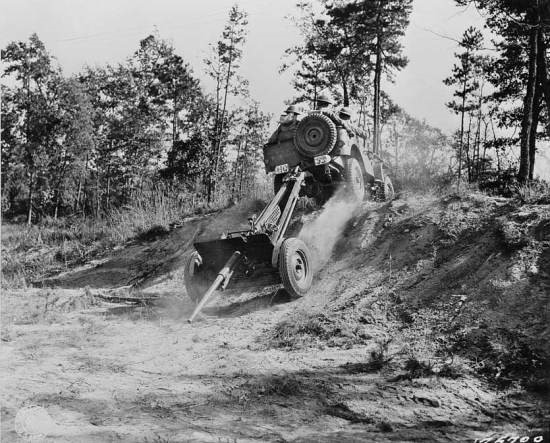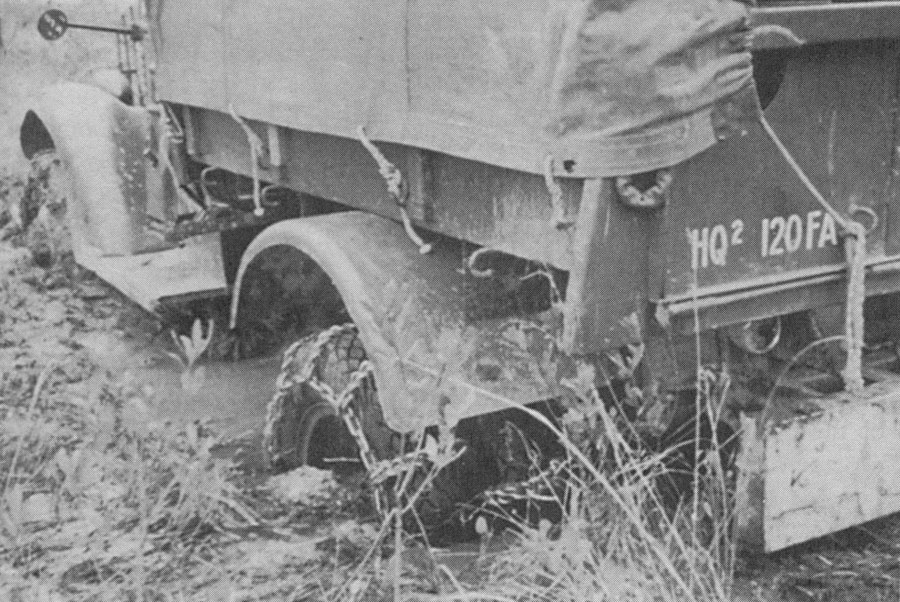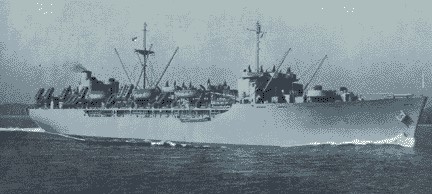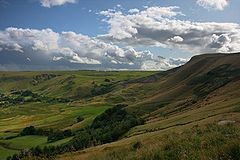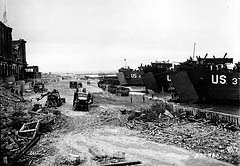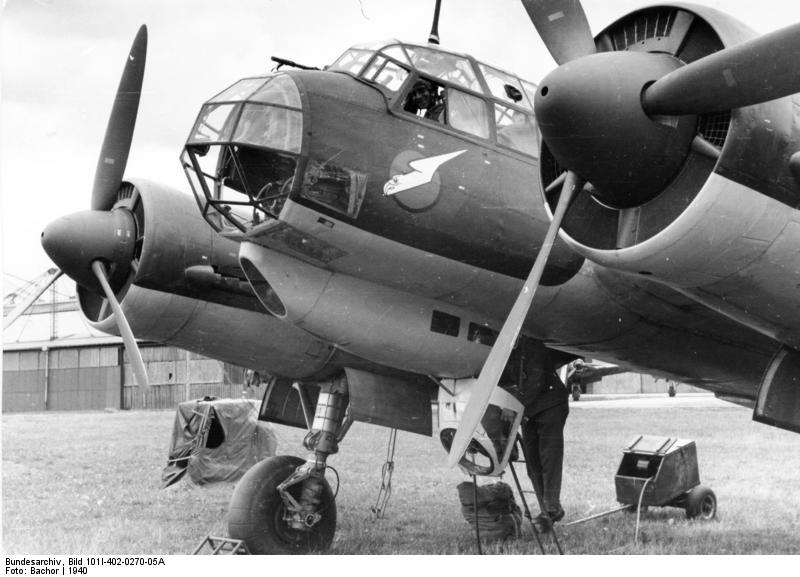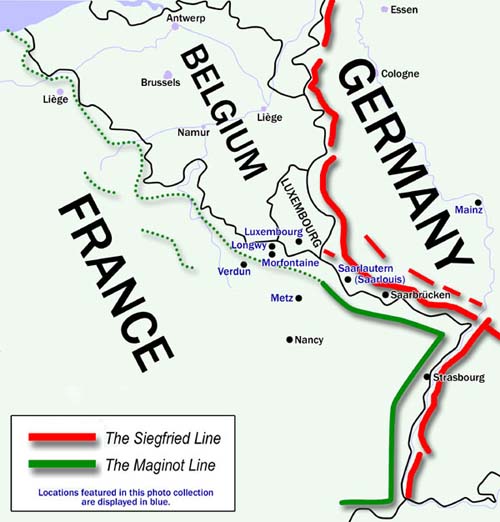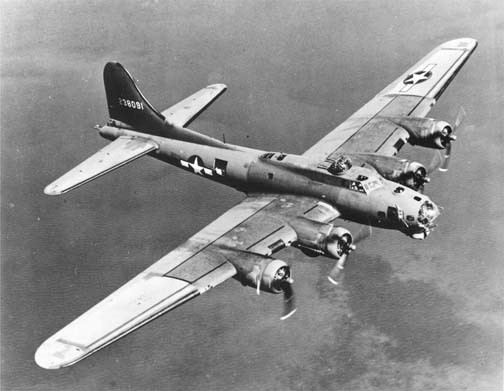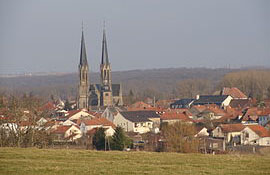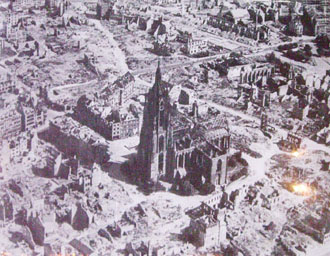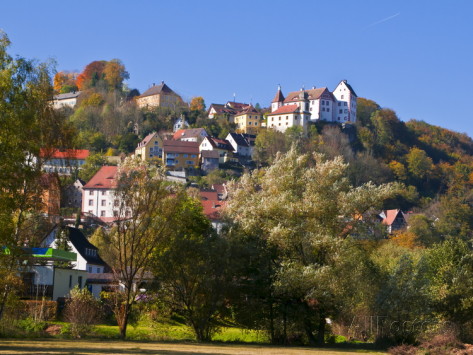ACKNOWLEDGMENTS
Greatest appreciation for the extremely valuable source material for this story is
expressed to the men whose names are listed below:
- M/Sgt. Jack GregoryHeadquarters Btry
- Sgt. McCuneCharlie Btry
- Tec 4. Kenneth W. ShephardDog Btry
- Cpl. BrewingtonBaker Btry
- Cpl. SchlosserBaker Btry
Sept 5, 1945
Edward F. Meany
1st Lt, C.A.C
Battery “A”, 567th AAA Bn
DEDICATION
This story is dedicated to the men of the 567th who made supreme sacrifice and now lie buried on the soil of countries not their own.
- Tec 4 Lawrence R. FinnDied at Liverpool, England
October 27, 1944
- T/Sgt Roger N. ButtKilled in action, Hirson, France
December 26, 1944
- Pfc. Bernard L. BrimmerDied at Sierck‐les‐Bains, France
March 19, 1945
- Pfc. Manuel P. PedrozaDied at Sierck‐les‐Bains, France
March 19, 1945
- Pfc. Jack CoxKilled in Action, Mainz, Germany
March 27, 1945
- Pfc. Clarence W. HowlettDied at Langensalza, Germany
April 16, 1945
MAY THEY REST IN PEACE
[Top of Page]ONE HUNDRED THOUSAND MARCH ORDERS
The story of any outfit in the Army is the story of its men, who they were, what they did, where they came from. Be they the highest officers or the lowest private, they are still men. Each one adds his small part no matter what the unit does en masse. A unit, a battalion, is good if its men are; poor, inferior, lifeless, only because of its men. Whatever it accomplishes or fails to accomplish, it does so through its men, and them alone.
The 567th Antiaircraft Battalion, infinitesimal part of a vast American Army, exists today a proud, compact little force of eight hundred individuals, most of them Virginians, who came together at Camp Haan, California, moved clear across America, thence over four thousand miles of ocean to the Old World to play its part in a gigantic struggle against a common enemy.
It served, served well, added four battle stars to its campaign ribbon, worked with three armies − the Ninth, Third, and Seventh − before the end of the Second World War. Aug. 10, 1945 found it at Épernay France. Behind the outfit was a good record, a proud record, a record made by its men, men who wore no stripes at all, men who did bear the stripes of the noncom or the bar of an officer.
About these men, this story is written. Without them it would never have been possible.
It is a long tale, and a good one. It began well over two years ago in an Army barracks at Camp Davis, North Carolina, on Lincoln's Birthday, 1943.
[Top of Page]THE EMBRYO BATTALION
A sheet of typewritten paper tacked to the bulletin board of the Mail Room of the ANTIAIRCRAFT ARTILLERY SCHOOL, summoned a small group of officers to the first meeting of the 147th Provisional Automatic Weapons Battalion. Before the C.O., bald‐headed, loquacious Lt. Col. VOLNEY M. WORTMAN, from Hawaii, stood the nucleus of the 567th Battalion. Major WILSON POTTER, Exec Officer; Lt. TODD; Hq Btry, Capt. ARTHUR ADAMSON, S‐3; Lt. E. F. MEANY, S‐2; Lt. RALPH CRANMER, S‐4; Lt. RANKIN, LTO; Capt. HAYES E. HASKINS, S‐1; and the four battery commanders, only one of whom remains today. Headquarters Battery went to Lt. TODD; Lt. ROGER E. SMITH took ABLE and still has it (much to his credit, he's a captain now); Lt. JACK GILCHRIST became C.O. of Baker; Lt. STODDARD was to shepherd the destinies of Charlie (“battalion”); Lt. KUNDE had charge of the “garrison outfit”, Dog battery. With assignments dished out, the C.O. made a short speech promising speedy movement overseas. He asked if Alaska or Australia would be preferred. Everyone voted for the land “Down Under”. Activation date, May 10, 1043, was set by AA Command, with Camp Haan, in sunny California, as the official birth place of the battalion.
Prior to the departure of the cadre officers from Davis, the outfit's number underwent an official change not less than three times. The 147th Provisional AW became the 799th Coast Artillery (AW) (Bn), then the 567th. AA command had quite a time making up its mind, but the 567th seemed satisfactory, and the number stuck.
A short leave at home was granted by AAC the moment cadre school ended. As activation date came close, the nucleus of the outfit, coming from all parts of the United States, met at Camp Haan, Col. WORTMAN, reassigned, handed his reins to WILBUR H. LAMBERTON, just back from a long tour of duty on Kodiak Island, Alaska. A new Lt. Colonel, he was to guide (very wisely) the destinies of the battalion for many months to come.
[Top of Page]FIRST GROWING PAINS
Activation day, like many days of its kind, saw a harassed S‐4 wondering what to do with bales of mattresses, boxes of unopened supplies, mountains of paper, uncounted piles of assorted junk strewn all about a narrow 2x4 supply room. CRANMER, in and out, on the go every minute, bargained, barked orders to excited BCs, tried to talk with an S‐3, at that moment busily engaged in fighting through a maze of field manuals and ARs. Telephones rang ceaselessly, people rushed in and out, shouted at one another, even tempers became a bit ruffled. Confusion reigned − very definitely. What also could be expected on that hectic first day, May 10, 1943?
A few more officers, a great boon to us, arrived from Camp Davis. One of them, a hard‐working, hard‐driving, sharp‐tongued Lieutenant JOHN M. PRICE, took over as MTO from Lt. WALLACE RANKIN. The choice, an excellent one on the Colonel's part, pointed to a motor transport section and battalion drivers, which in months ahead, would rival any others in Camp Haan or elsewhere, account for an enviable, no‐accident record, and prove, when the outfit later hit maneuvers and continental operations, that the first battalion MTO had done a solidly fine job.
One day later, the cadre came − the first sergeants, key noncoms from the 459th of Camp Hulen, Texas. There were men like “RUS” WHITE, “JOHNNY” HAYES, DIXON, and CHAMPAGNE, the little disciplinarian who was to become Dog battery's martinet. BILL ALLRED, then a Master Sergeant, took the post of Sergeant Major, while T/Sgt. McDaniel began a long career in the S‐4. Both these men now wear the bars of warrant officers.
Fillers were not due to arrive until sometime in July. This gave the cadre a chance to train on what little equipment we owned, to receive and process vehicles, tend to myriad details, know one another a little better. Once the infant outfit could overcome its growing pains, arriving fillers would find a smoothly functioning team all set to put them through their paces.
With an eye to that end, Colonel LAMBERTON took his cadre to Camp Irwin, deep in the heart of the Mojave Desert for a ten‐day training period. Rifle ranges, complex small arms courses, a hike or two, antiaircraft, anti‐mech shooting matches, spot observations of battalions in field bivouacs, field training, field firings, or maneuvers, all the multitudinous phases of an AAATC MTP helped prepare both cadre officers and men for the immense task that lay ahead.
Those who can retrospect, recall those rough ten days and the blazing desert heat, so hard to get used to the first time. When the time came to return to the palms of Riverside and cool corridors of the Mission Inn, a feeling of relief surged through everyone.
Three day passes proved just the right tonic. A short jaunt to Los Angeles, or San Francisco, or along the beautiful blue Pacific, or just a three day “rest” by the LEA LEA Bar seemed ample reward for work in the desert.
Ahead of us lay the big job.
[Top of Page]ARRIVAL OF THE FILLERS
Fillers! Between July 5th–8th, they poured in, seven hundred ninety‐six of them. Baker Battery's Corporal BREWINGTON relates the mingled reactions of the new men:
“Someone looked out the window as the train puffed into a seemingly deserted town, typical of many we had passed through, and remarked: RIVERSIDE. Almost at once the windows were jammed. Everyone wanted to get a good look at this particular town, since by this time we were all convinced our destination was Camp Haan.”
“As the train moved slowly through and began climbing the hills, we were told to prepare for debarking. There was much excitement as we neared our new home. We were about to enter into a new phase of life. Not a dog's life but a reasonable facsimile.”
“The train stopped and we were off and in formation, marching as smartly as five day old recruits could under the weight of a full field pack and two barracks bags. During that five hundred yard “forced march”, many a muttered curse was heard.”
Our fillers came from two camps. A smaller group, Camp Toccoa boys, had Form 20s bearing the legend VOLUNTEER PARACHUTIST. The bulk of the battalion, tho, from “Old Virginny”, had entrained at Camp Lee. They'd been out of “mufti” a scant five days.
That first sight of green‐denimed recruits lugging bulging barracks bags, and wearing those moronic little green fatigue nets, signalized, to the cadre, that vacation time was FINI. Work, arduous work, round the clock, with damned little letup, would begin in dead earnest.
[Top of Page]TRAINING BEGINS
Reception week at Area #4, Camp Haan. Long, shuffling lines of confused people. Noncoms gently shepherding this group to hutments, another group to supply rooms. Police details, work details, guard! Fatigue. Scurrying officers, harassed first sergeants, sweating supply sergeants. Formations, more lines, hither, thither, and yon.
The classification madhouse! Form 20s sorted, unsorted, scrambled, unscrambled. Service Records, pay books, records of this, records of that. Single rosters, duplicate rosters, rosters in triplicate, quadruplicate, quintuplicate, every other “ate”. Interviews, questions:
“Pvt. Doakes, whadja do in civilian life?”
“Fed horses on my ol' man's farm, sir.”
“Where ya from?”
“Snowville, Virginia, sir.”
“Snowville? Where the hell's that?”
“Wh‐‐uh‐”
“OK, Doakes, tha's all. Report to Baker Battery. You'll make a good cook!”
“Next case!”
Maddening confusion far into the night. Hell week for recruits. S‐1 looking like a city copy room about to break the biggest story of the year. S‐4 gone hog wild. People calm, people nervous. Everybody racing like a runaway express train. Inspectors from brigade, from group, from AAATC, the “WE'RE‐DOWN‐TO‐HELP‐YOU‐OUT‐DEPARTMENT”. Crowds outside the medics. Jabs with the needle. Inspection of teeth, inspection of feet, inspections to see if you're half‐dead or half‐alive. Endless, endless work. Second week came around with a bang. Work, more work, double dose, this time. Marching, counter‐marching, barking noncoms, bellowing officers, shuffling men. Men in step, men out of step, men with no step at all.
Orientation. Films, speeches, lectures, harangues. People telling us why we're here, why we fight, why we can't be civilians anymore, and what's ahead. Articles of War. Military Courtesy. Speech by Colonel BARBER − “You'll probably go through plenty before you get out. You're part of the big army now!”
The County Fair. What one HAS to learn. Exhibit “A” − “Now, here, gentlemen, you see a gun, 40mm, M1, on carriage M1A1.” Sideshow “B” − “no kidding, fellas, this M5 Director is the brains of the Ack‐Ack!” Exhibit “C” − “One thing to remember about this 50 caliber machine gun is that you DO NOT, I repeat, DO NOT fire it from the hip.” Displays on camouflage, concealment. Recognition of Aircraft − the “ready, now” department. Lots to know, more to learn − even unto the exact centimetric [sic] measurements of the latrine, Army M1, the garbage pit, M1A1E2, type 1943, with accessory trap, fly, baited, type T4E5, together with pit, grease, seepage, pebble‐strewn, type AAATC, M3B1 ½. Last, from but not least, the “punch” line, grand finale to the whole fair − two mud‐caked sweating lieutenants “IF‐YOU‐DON'T‐KNOW‐YOU‐GET‐KILLED Division”, lunging, thrusting at each other like maddened gladiators.
Typical reactions: “What're they doin' to us, anyhow?” “Some Joes in Camp Lee told me the AA was one sweet racket!” “I wanna go Home!” “2 Hell with this, I'm gonna goof off 'n the EC'll have to send me to OCS . . . ”
By now, preliminaries were over. Training started in earnest. We tore down forties, put them back together, delved into that incomprehensible maze of dials, ring gears, bevel gears, worm gears, speed drives, and colored wires that some mathematical genius created for the M5 Director. One could saunter most any afternoon to the gun park, see men, broken down into gun sections now, hard at work, field stripping, drilling, emplacing, march ordering fire units, absorbing theory of sleeping through it, arguing a point with officer “profs”. All the time, it was go, go, go, drive, drive, drive, drive. More and more learning was high‐pressure to us. AAATC called it Mobilization Training Program. Murderous Training Program might have been more appropriate.
Mornings were NEVER devoted to rest, relaxation. Shrill, ear‐splitting whistles tumbled us out of bunks, lined us up along battery streets, as a first sergeant boomed out names in chill moments before daybreak. We marched to breakfast, lined up after breakfast, marched to dusty parade fields. Then we marched, marched, marched some more to the tune of:
“Right, face, left, face, 'bout face, for‐‐‐r‐r‐huch, hup, two, three, four, hup two three, four − left flank, march, rear, march, rear, march, right oblique, left oblique, dress those g‐‐‐‐‐‐‐‐‐d lines, yer in the Army!”
“Pull in that gut, mister. Head up, shoulders back, chest out, chin in! Wipe that smile off yer face, sojer. Dress right, dammit! Lookit those lines! Wotta sorry bunch o' sad sacks! Hup, two, three, fower [sic]. Keep that interval! Hey, Joe, yeah, you, third front left, rear rank, yer out o' step! Ya blind? Wake up, wake up!”
“Cadence count! C'mon, yell it out! Try again − ca‐‐denn‐‐nce, count! Louder, louder! Wassa matter? 'Fraid to talk? 'toon, halt, hup, two! Left, face. Double time, MARCH! Hup, two, three, four, hup, two three, four, hup two three, four. Quick time, HUCH! 'toon, halt. Awright, now look, you guys, I'm not out here for my health! DISS‐‐‐‐‐‐‐‐‐‐‐‐MISSED!”
Ten minutes after this ordeal they called INFANTRY DRILL, we had to line up again, MARCH to the first class. All morning long, day in, day out, they taught us map reading, military court?, airplanes (till they flew at us in our sleep), communications, AA there, literally cramming our weary brains with every subject in the War Department curriculum, as if all this were not enough, we were marched to the gun park after lunch to cram some more, drill over, over again. Five o'clock would have brought merciful relief were it not for retreat formation. Oh, well, the BC'd let us go to the Mission Inn.
An “enlightened” soul suggested NIGHT CLASSES!
The outfit raced along at this rocket‐like pace for a few weeks. One bright day AAATC blithely informed the CO that the Battalion would spend three weeks in the Mojave Desert, at Irwin. The date was August 16, 1943.
[Top of Page]INTRODUCTION TO IRWIN
Anything but a luxury station, Camp Irwin's sole claim to fame lay in acres of pyramidal tents, a foot or more of glossy sand, sizzling heat, broiling sun, iron‐grey perks, dried up mesquite and sagebrush. Though not listed in any prospectus, the reservation's accommodations consisted of two theatres, one of them dubbed the Dust Bowl, a chapel, creosoted PXs, rattlesnakes, and jackrabbits. This spot of California, forgotten by God and sensible human beings, could claim two distinct mottoes − one, AATC‐sponsored, the other a product of battalion creative talent. AATC's motto, simple enough, was emblazoned on a white, wooden standard alongside the main gate:
“THIS IS GOD'S COUNTRY. DON'T MAKE IT LOOK LIKE HELL!”
by order of Camp Commander
Battalion's slogan, a masterpiece of terseness and simplicity, rested in the mind of every man:
“WHY DON'T YOU DRY UP AND BLOW AWAY?”
An easy existence here was not our lot. Battalion S‐3 fumed, fussed, fretted, ran back and forth to an uncommunicative AAATC S‐3, puzzled over confusing figures on ammunition allotments, allocations, tried bravely, with some success, to decipher the undecipherable training memoranda, prepared score cards, laid plans for range firings till all hours. BSO argued, contacted, argued some more with training center big wigs over ammunition allocations, expenditures, and tried to meet ten thousand requests and demands at once. Planning here was of primary importance.
In the last analysis, as always, the bulk of the work fell on the batteries. We were here for one purpose − to qualify over eight hundred men and thirty‐nine officers in rifle marksmanship, shoot every sort of weirdly devised small arms course. Preparations, necessarily exacting and extensive, involved endless marksmanship lectures, dry runs, dry runs, more dry runs, a lot of care, cleaning, maintenance. Battery commanders, battery officers, key noncoms, toiled over firing orders, score cards, hundreds of minor details that go with the first range practice.
Rest? Out of the question. We rose at 0430, gulped down a hasty chow, were on the firing line before daybreak, never quitting till sun set behind blue hills. Back we'd march, dead tired, thru the dust, to clean weapons, begin the routine all over again next day. For one solid week, with no letup, every man ran himself ragged. Coach and pupils, alike, toiled endlessly. By work's end, we were all ready to rush to Riverside and forget it all.
Morale dropped to minus Zero. No passes! Grumblings reechoed from Tiefort Mountain back to camp.
Highlights of the next two weeks were the highly complicated transition courses, round robin affairs, the preliminary Bofors practices on the bleak, dust‐ridden West Range. Many details concerning these events are but a vague memory now. With the exception of the Infiltration Course.
Here was the pay off. To become battle‐hardened “veterans”, we were obliged to crawl, on our bellies, over a hundred yard stretch of wasteland studded with dynamite pits, pock‐marked with craters, strewn with barbed wire. We made the “crawl” in “full field” as converging streams of machine gun bullets chattered and sang noisily a few inches above us. But once through, and the Army Ground Forces gave us its tacit stamp of approval.
[Top of Page]VICTORVILLE FIASCO
Entitled, at last, to a brief respite, the outfit, dusted up, convoyed towards Haan. En route, it stopped at Victorville to furnish mythical protection to an airport whilst “enemy” B‐25s put on a show and engaged in wild skip bombing. It was a thrilling sight to all except Baker Battery. One or two hell‐bent for‐adventure pilots cultivated the nasty habit of “skipping” one hundred‐pound sand bombs into Baker's gun pits. Lt. GILCHRIST learned quickly the technique of rapidly abandoning field positions.
Victorville marked the scene of the first “major engagement” for the 567th. The battalion received no battle star, no mass citations, no commendation from higher authority. Yet, we fought, fought well‐‐‐‐‐‐‐‐not with 40mms or fifties: Instead we turned the tide (or the tide turned us) with fists, bottles, beer mugs. Our first mission, anti‐aircraft, (that is, against the Air Corps) was successful. Old soldiers of the battalion, veterans of this action, talk of subscribing to a fund for a memorial plaque to be placed on a building quite close to the “historic” “GREEN SPOT CAFÉ”. It will bear this inscription:
VICTORVILLE − INCIDENT
HERE
ON THIS SPOT
Sept. 2, 1943
THE RAW, UNTRIED MILITIAMEN OF THE
FIGHTING 567th AAA BATTALION, RUTH‐
LESSLY ATTACKED BY INEBRIATED HORDES
OF THE ARMY AIR FORCES, HELD FIRM AGAINST
A FUSILLADE OF FISTICUFFS. GLASSES,
BOTTLES, and ASSORTED ARTICLES OF FUR‐
NITURE, FIGHTING BACK WITH SAME SO
SUCCESSFULLY, THAT, BY THE TIME MILITARY
POLICE ARRIVED, THE ENEMY HAD BEEN
CLEARED AS FAR AS THE SIDEWALK. HE
RETIRED, BADLY BATTERED, AS THE MEN OF
BATTALION, VICTORS SUPREME, SPED AWAY
TO TAKE UP NEW POSITIONS. TO THE UNKNOWN
LEADERS OF THIS SUCCESSFUL ENGAGEMENT.
THERE IS QUAFFED A TOAST OF EVERLASTING
APPRECIATION.
The battalion “withdrew” to Haan.
“Rest period” at Camp Haan, Area 8, lasted just two weeks. During that time, we recuperated from the rigors of the scorched Mojave by pulling alert guard at March Field. Groups, or so the story goes, feared that wandering Nipponese pilots would bomb the field.
[Top of Page]THE LONG STAY IN THE DESERT
September 19th saw the men back at Camp Irwin again. We were fated to remain there seven weeks, first on the dust bowl people called the West Range, then on a parched East Range. Out here, men lived not in comfortable barracks or pyramidals, but in pup tents. To this type of life gradual adjustment was made, although, it, at first, proved quite rugged, rough, and ready.
An easy existence here was not our lot. Battalion S‐3 fumed, fussed, fretted, ran back and forth to an uncommunicative AAATC S‐3, puzzled over confusing figures on ammunition allotments, allocations, tried bravely, with some success, to decipher the undecipherable training memoranda, prepared score cards, laid plans for range firings till all hours. BSO argued, contacted, argued some more with training center big wigs over ammunition allocations, expenditures, and tried to meet ten thousand requests and demands at once. Planning here was of primary importance.
The greater portion of this training period was devoted to the firing of 40mm guns at towed sleeve targets, or shooting at elusive little Oq2A's and temperamental rockets − from ground mounts, AA mounts, ring mounts on trucks. Ranges were simple or very complex. Our gunners gained varied experiences under variable conditions.
The firing record was average. We slashed no records, just tried our level best. Not one man or officer wanted to stay in the desert any longer than necessary. Rumors, plus official announcements, circulated that mass furloughs and return to Haan were to be the ultimate reward upon the completion of training. Everyone, in the gun sections, in the staff sections, strove for that end. The desert was no place to spend the rest of one's life, even if it did afford extra‐curricular opportunities for marksmanship on jack rabbits or weekend forays to Death Valley, Shoshone, Tecopa, isolated, but interesting places.
People made “safe” wagers that, before long, the battalion would be sailing through the Gulf of Mexico. Italy? The Pacific? Djibouti? Maybe we'd make the “second front”. Polk was a “staging area”, or so we'd heard.
Several major training requirements had yet to be fulfilled. One of those was the twenty‐five mile hike. Men commenced this “jaunt” in high spirits. But, as the march led over sand trails and one's foot slipped with every step taken, breaths came in short, quick gasps. Sweat poured from bodies weighted by full field pack. As long columns snaked through the darkness, stumbled over hundreds of rocks, we began to wonder when, oh when, the confounded ordeal would ever end. Next day, and for some days afterward necks, arms, thighs, body muscles were given ever‐generous applications of SLOAN'S LINIMENT. Everyone echoed the sentiments of our big, lumbering S‐3.
“I'm all knocked out, all knocked out!”
Final training requirements were two tactical maneuvers, both of which were passed successfully. Batteries and AAAIS received well‐deserved compliments. Morale hit a new high. We could return to Haan, now. Mass furloughs were in the offing. Current stories had Colonel LAMBERTON chartering a train to take the boys from Riverside to Roanoke − non‐stop.
Fate intervened. AAATC ruled that our firing record needed improvement. We had to stay two weeks longer on the desert. But all records were shattered with the result that, by early December, the unit returned to Haan, quite pleased with itself. Mass furloughs became the watchword.
A watchword until an AAC order jolted us out of a reverie. Only 7% of the command would depart at any one time. Visions of being home for Christmas faded. We began to wonder when.
[Top of Page]RUMORS RUMORS RUMORS
MTF had ended. What next? Rumors circulated thick and fast. Directly overseas! Some “prophets” had the unit on the transport slipping through the Golden Gate in a matter of weeks. There was talk of disbanding. AA wasn't needed any more. INFANTRY, Infantry, Infantry, loomed up a stark, sinister spectre.
Other “official sources” had the battalion chasing armor and infantry in “little Tunisia”, the California‐Arizona Maneuver Area, beside the burning wastes of the Salton Sea.
No one knew our next mission. “March Order complex”, a disease prevalent in AA outfits, broke out. Let's leave Haan Training begins at Camp Haan! Anything to be rid of AATC.
[Top of Page]TRANSCONTINENTAL MOVEMENT
January 15, 1944, came on the scene. Movement orders! Where? The secret was revealed. Destination - Louisiana Maneuver Area, Camp Polk.
Joy was everywhere. Men brought maps, scanned them, wandered about the location of that place called Leesville. Visions of weekends in New Orleans, Baton Rouge, Shreveport, days off in our heads.
People made “safe” wagers that, before long, the battalion would be sailing through the Gulf of Mexico. Italy? The Pacific? Djibouti? Maybe we'd make the “second front”. Polk was a “staging area”, or so we'd heard.
Preparations, packing, crating, were hurried. Bofors, M‐51s were lashed down to flatcars. For a week, the battalion went “railway”.
January 20, 1944. AAATC BAND serenaded the 567th as its two mixed trains pulled slowly away from Haan. Then from the semi‐tropical climate of Southern California, we soon found ourselves rumbling across the bleak snow covered wastes of Arizona, New Mexico, south, over the endless Texas plains. The trip, not too eventful, took four days.
In the “dead” hours of a wet, rainy, windy morning (January 24th) the battalion hit Camp Polk. No “welcoming committee” greeted the “AA boys”. A “rude” camp commander ordered a 4 a.m. detrainment. We proceeded, not to the warm barracks but to a “bivouac area” outside of Polk, specially reserved for field soldiers.
[Top of Page]LOUISIANA − MINUS TRADITIONAL HAYRIDE
A Louisiana “field soldier” is characterized by that wet, haggard, hangdog look and has a lingering bad taste in his mouth. He bivouacs in a swamp, wallows about all day in “gumbo”, bunks down, at night, in a musty pup tent, shoos away omni‐present, inquisitive hogs. Our men thoroughly acquired the art of field soldiering the first morning. Our assigned swamp area bogged down trucks, guns, equipment, and disheartened us generally. California was nothing like this place!
The Sixth Maneuver period began in two weeks. Like all maneuvers, it was a simulated war participated in by AA, Field Artillery, Armored Divisions, Engineers, Doughboys, all branches of service. After a short period of Flag Maneuvers, dress rehearsal for combined problems, the battalion was assigned to the Red Army. Briefly, the teams of the Reds and Blues were to drive each other from swamp to swamp.
We “fought” the OPERATION SWAMP with many divisions − the 75th, 44th, 92nd, all infantry, and the 8th and 9th armored. Tactical missions ranged all the way from AA protection for the Infantry and leapfrogging artillery, to defense of railheads and supply depots.
The unit remained ever on the move, advancing, retreating daily, with an occasional “break”. The terrific shape of the roads prompted many an “armistice”, if not helped advance the date of “unconditional surrender”. “VL” DAY, April 3, 1944, saw the finish of the mimic war. Neat white barracks inside Camp Polk looked good to us.
[Top of Page]INTERLUDE AMONG THE PINES
Instead of returning to “garrison” at Camp Polk, the battalion was given an area in the pines off route 141, at Pickering, halfway between Leesville and DeRidder. Life proved not too unpleasant. For a change, we ran our own Army post. Of an evening, there was always the chance to visit Leesville and DeRidder, wet and dry, respectively.
A flagpole was erected. Retreat took place each evening. Marching past in review, the batteries presented quite a picture.
Following two months of flank movements, gun drill, cleaning of equipment, more classes, more inspections, more parades, and retreat, movement orders came. This time, Camp Stewart − dubbed by Winchell the “concentration camp of America”. Again, we loaded guns, trucks, equipment on flatcars, rolled eastward through Louisiana, Mississippi, Alabama, on into Georgia. At the Stewart siding, forty miles out of Savannah, the battalion detrained, set up in “Tent City”, under the “protective wing” of AAATC.
[Top of Page]STEWART
At Swamp Stewart, famed for its steaming heat and blinding brass, training was thrown into high gear. One main obstacle remained to be hurdled − the AGF tests. Success meant the retention of the red braid on our caps. Failure assured us that we, too, could be the unkempt, scraggly‐bearded heroes in the sagas of Ernie Pyle. But the 567th made the grade, after much backbreaking labor. It was thereby made eligible to “go across” as antiaircraft.
Actual movement to a port of embarkation was pleasantly “sweated out”.
“Feeling quite proud of our accomplishments, battalion decided to compensate for the work and energy expended by the men. The ball room of Savannah's swank DE SOTO HOTEL was hired for the occasion. With the cooperation of the WAC detachment and city feminine societies, the most momentous social event of the 567th history was carried out − as were some of the men.”
This post‐AGF joyride could not last forever. Orders came, fateful ones. New York Port of Embarkation by September 5th. Batteries packed, crated, waterproofed equipment, puzzled over TAT, IOI, made, unmade long lists. The advance party − Capt. WERNER and LT. FOSTER left for “DESTINATION X”. Where were we going? Nobody knew. War Department changed the date. A brief respite gave us till October 1st.
Official “liberation” from Stewart came September 30, 1944. The unit entrained for the staging area, Camp Kilmer, New Jersey. Kilmer could not have proved a better place to say farewell to the United States.
[Top of Page]KILMER
Life in Kilmer brought a nostalgia for civilian days again. Except for a few inspections, examinations, men found difficulty in remaining within the limits of the camp area. New York, after five every evening, and not too distant “Philly” helped tremendously to unleash pent‐up energies and emotions.
Unable (?) to withstand the rigors, Dog Battery felt obliged to leave the fifth of October. The rest of us fought the battle of Times Square and Greenwich Village until Columbus Day [Oct. 13].
[Top of Page]UP ANCHOR
The day the Great Navigator discovered America, the 567th clambered aboard its “flagship”, “SS MARINE ROBIN”, for the overseas expedition. Precisely, at ten minutes to six in the evening, two days later, up rattled the anchor chain, the gray transport, wheeled, sloshed about, coasted slowly down the harbor, past Lady Liberty, waving farewell in the sunset, and moved out into the Narrows. We were on our way. Men, hundreds of them, crowded the rails as New York and America disappeared slowly in the evening mist. No one said much − just looked, and looked, and looked.
Next morning, Sunday, we found ourselves far out at sea, in the midst of a mammoth convoy stretching from horizon to horizon. Not a speck of land lay anywhere in sight. Only green swells, swishing, swirling spray.
A day later, the booming voice of Major WOOD came over the PA system:
“The destination of this ship is Plymouth, England!”
Plymouth? So it wasn't Honolulu via Panama Canal after all! Speculation began. What type people were the English − how much like us Yanks, how unlike us? What would life be like on the Continent? And how long our stay in England?
Day in, day out, the ship sailed on, never changing position. The same scene met our eyes as we came atop deck each morning and went below for the evening after “Darken Ship”. Those who could, followed the progress of the voyage on a weathered sea chart stuck up near the navigating bridge. Actually, the convoy zig‐zagged all over the Atlantic, coming, at one point, two hundred miles north of the Azores, before it veered sharply nor' east to the British Isles.
Life never proved too dull. By day (when the Transport Commander let us), we'd crowd the rail, gaze at a foam‐flecked sea, peer at the destroyer escorts far off on the horizon. Night fall had us below decks, on buns, out of bunks. Poker games were innumerable. Then there was added diversion in preventing a bellowing herd of dumb ox Engineers from inciting a mild mutiny.
Again, the destination was changed. It turned out to be Liverpool. Reports had it that Adolf's cloud skimmers cherished a peculiar affection for the latter port.
Colder, rougher grew the sea. The ship's prow cleaved its way farther, farther north. As the sunset of October 25th blended into twilight a faint, low, long black outline rose many miles off the part bow.
Land! WHAT land? The southern tip of Ireland, naval personnel informed us. The “ROBIN” entered the Irish Sea. Wales lay way off to starboard.
Next day, “in a pea soup fog”, hawsers were thrown out and the transport tied up at the Prince of Wales Dock, Liverpool. There to greet us was a real “Limey band”. Its renditions of the “Washington Post” and “Beer Barrel Polka” seemed never more beautiful.
[Top of Page]OFFICIAL WELCOME TO BRITAIN
There HAD to be the official welcoming committee. Officers well remember the “address of welcome” by a razor‐backed little “Com Z” colonel and the hearty greeting from the jolly Welsh brigadier. The words of our “Com Z” colonel are priceless:
“I welcome you to the UK, men, on behalf of General Eisenhower. It is my hope that your stay here − it may be three weeks or three months − will be a pleasant one. Don't worry about a thing. If you step out of line, I'll slap a five hundred dollar fine and court martial on you. We break officers here every week. You gotta be good to last. Snafu, and back to the States you go.”
“Stay off the streets. MPs are making raids for AWOLS. Above all, don't worry. We're glad to have you here!”
[Top of Page]BLACKSHAW MOOR
England, THE UK. Here we were! A rickety little train whisked us across the Midlands to Leek- where we met the advance party − then to Blackshaw Moor and the delicious steak dinner, compliments of DOG battery. At the “Moor”, the 567th remained from October 26th to December 12th.
The stories of life on the English moors would fill a book. On it, officers and men alike could publish their own “White Paper”. Memories of Leek, Hanley, Buxton, and “The Cat and The Fiddle” will in years to come form topics of countless fireside conversations and bachelor get‐togethers. We worked, we played, hiked across green knolls and hills, drank British ale and stout. Some of us took a peek at London, Edinburgh, Glasgow. As always, we wasted no time.
“The weather” was cold. Snow fell continually. With the arrival of our equipment, areas, set aside for trucks and guns, became literally so many acres of mud. Many a long, dreary hour was spent in the rain, sleet, and snow, as men hacked cosmoline from guns, smashed open crates, huddled about fires as they checked volumes of packing lists.
“More weird stories began popping. With the Luftwaffe supposedly destroyed, what was the mission of AA on the Continent? Reports filtered back that all forty millimeter guns found plenty of use on the front lines whilst M‐51 fire pinned down the Boches as our Infantry advanced under its protective screen.”
Common knowledge had it that the above tactics were highly favored by Ninth Army. Our first assignment would be WITH that army. Needless to say, those who had not taken out allotments, insurance, or made a will, did so posthaste.
[Top of Page]OFF TO THE EUROPEAN CONTINENT
The inevitable move to Southampton came December 12th. Four days of C rations there, and we gladly embarked for Le Havre, a buzz‐bomb length across the Channel.
December 17th, at various hours, sections of the battalion stumbled up the pebbled beach, moved through the battered, gouged, bombed out port, to a musty chateau at Harfleur. Met there by the group arriving from Rouen, we convoyed to a windswept field called Red Horse assembly area. At this location, for five days, men packed, loaded, unloaded, prepared for combat. Christmas we spent chilled by the weather and dampened by low spirits as we wondered what next.
[Top of Page]CONTINENTAL OPERATIONS
Day after Christmas, the outfit, now tactical, started on its long, freezing trek to Visé, Belgium. En route, at Hirson, France, the entire column was surprised, at what seemed a prearranged rendezvous, by a JU‐88 which made three successive attack runs, splattering the road and headquarters trucks with murderous machine gun fire. 20mm high explosive and armor piercing shells. All batteries fired back with everything possible, and, before the strafer disappeared, expended (in toto) 25,000 rounds of .50 caliber and 20 rounds of 40mm, suffered seven casualties, one tragic death. Headquarters received the greatest punishment with the one death and most of the casualties being confined to that organization. The superb and gallant work of the Medics, especially Pvt. Walton, can never be forgotten.
Jerry returned much later and attempted to catch Able unawares, but was riddled with machine gun fire. Several days later, military police located a downed German plane with its two stone dead pilots, near the spot where Able engaged a night strafer. Though unofficial, the first category 1 was and is unquestionably claimed by Captain SMITH's boys.
Thoroughly initiated, unnerved, but more alert than ever, the battalion made its way to Visé, Belgium, in the dead of night December 27th. Baker rolled in from Liège; the others made the report center by devious routes. To say that sections were not lost would be gross understatement. Quite a few of them were lost - but thoroughly.
The battalion “rested” in Visé just long enough to thaw out. With Von Rundstedt's salient spearheading dangerously into American territory, no time could be lost. Ninth Army needed all the troops it could summon.
Battalion Command Post opened up in Brand, just below Aachen. Colonel LAMBERTON came under central of XIX Corps and was specifically charged with the protection of corps field artillery areas in the Aachen‐Brand vicinities. He disposed his batteries accordingly: DOG, at Eilendorf, along the Siegfried Line; Charlie, in the Brand area; Baker, south and west of Brand; Able, closest to the lines, in Oberforstbach.
For four freezing days, we lived here, sweating out buzzbombs, looking for lone Jerries, keeping always alert for infiltrating paratroopers. Corps, expecting some thrust from the east bank of the Rur, told us to stand fast if the enemy pierced the thinly‐held sector. Fortunately, he never did.
Third army orders had us on the move again December 31st. This time it was Metz, a “scant” three hundred miles distant. For twenty‐two grueling hours, the 567th convoyed south, through the Ardennes, in fierce cold. Drivers, taking the worst punishment, had a trying time to keep trucks from literally sliding all the way from Dinant to Charleville. Fatigue and numbing cold caused wrecks, from which Charlie battery suffered quite heavily. As always, Jerry shadowed us until we dragged ourselves into Longuyon, the report center.
Metz, liberated but a month before, was reached January 2, 1945. The new mission with the Third United States Army, required that the battalion protect vital bridges and MSRs. Able set up on the roads and bridges in Metz; Baker stayed north, at Uckange; Charlie remained on the alert for prowling Jerries at the Conflans railhead; Dog's job lay in seeing to it that convoys travelling on the Uckange‐Metz road were unmolested. In fact, Dog, in pursuit of its mission, showed itself so conscientious that its M‐51s opened fire on a Fortress crew as it bailed out. After all, they DID resemble German paratroopers at a distance! Luckily, no one was even grazed.Initial assignment with Third Army lasted just two weeks. Seventh Army clamored for the indomitable outfit, so the 567th proceeded farther south, into Alsace‐Lorraine.
Prior to the departure, an event of major importance occurred. Colonel LAMBERTON left. He departed for a hospital in Bath, England.
Major ROBERT J. FOSTER assumed command. He proved to be a good publicity agent for the 567th, helped the battalion obtain a fine commendation from 23rd Group, and, by his efforts clinched his own chances of promotion. In addition to his abilities as advertising manager for the outfit, the new CO was officially credited with the introduction of Schnapps, a new fad adopted by certain informed quarters close to him.
[Top of Page]CONTINENTAL OPERATIONS − SEVENTH ARMY AREA
Most accurate informative source for missions with the “Patchmen” is the meticulous majordomo, M/Sgt. GREGORY. His account is reproduced:
“On 19 January 1945, the battalion was temporarily attached to the Seventh US Army and moved into positions in the vicinity of Sarralbe, France. Battery missions were as follows:
Battery A − Class III Supply Dump at Diemeringen and road net vicinity of Lorentzen.
Battery B − Railhead at Sarrebourg. (ED NOTE − The 6‐wk. “Rest Center”)
Battery C − Support of units of 208th FA Group near Sarrebourg.
Battery D − Road net vicinity of Oermingen and Sarralbe.”
“Battalion was relieved from attachment to Seventh US Army and returned to control of Third Army 27 February 1945.” (ED NOTE − Battalion is the proud possessor of a commendation from the Commanding General of the 101st Airborne Division in recognition of its excellent performance while attached to that unit. And DOG battery's own Sgt. HALFORD has in his files an enviable letter of commendation from General Townsend, CG of the brigade directly controlling us operationally).
[Top of Page]CONTINENTAL OPERATIONS − THE RHINE AND EASTWARD
Once we were back in the Metz area, life, for a while, was mighty good. Baker exploited the advantages in Thionville, as did Dog; Able and Charlie lived well; Headquarters “roughed it” in the spotless Rombas “country club”.Next real action came at Mainz, Germany. AA protection was furnished for XX Corps' bridgehead, the longest tactical bridge in the world. SMITH's and PICKERING's outfits dodged 88mms and were deafened by cracking 90mms and 155s for three solid days. The “garrison outfit” picked off bottles, boxes, assorted debris floating down the Rhine, with M‐51s. Battalion's “CP boys”, at Essenheim saw a battered mount and some shell splattered trucks come into the motor pool from away up front, and had a chance to gape in awe at the deadly accuracy of German mortars.
After Mainz life became quiet once more. We march ordered to scores of places clear across the Reich, moving as fast as our trucks would take us, to keep pace with American armies slashing a bruised, battered and nearly beaten Wehrmacht. First it was Wiesbaden, then Eisenach, as the other end of the autobahn, next Langensalza, Würzburg, Schweinfurt (where Charlie devoted attention to Bed Check Charlies on night forays), finally Erlangen, Nuremberg, and Regensburg, last operational stop. The varied missions and diverse battery experiences would fill pages and pages. It should be noted, however, that, during this period, GEORGE PATTON awarded us a fine commendation for our collective, superior performance, in protecting his vital gas depots and in shuttling thousands of gas toward the front that moved hourly. [Top of Page]CONTINENTAL OPERATIONS − LA VICTOIRE
The German war machine neared collapse, complete collapse. While the unit operated along the Danube, in and near Regensburg, the end came May 8th. The ETO campaign faded into history.
Celebration of the VE Day was highly imaginative and original. Irrepressible Baker decided that the finest way to end the war would be to send its ammunition skyward. “BLOOD AND GUTS” and harassed Colonel CHAMBERLAIN were united in violent disagreement, with the result that Lt. CRAMMER together with certain other officers was summoned to soothe the explosive tempers of the two high‐ranking officers. In the long run, everything came out all right.
[Top of Page]APRÈS LA VICTOIRE
For some weeks following cessation of hostilities, battalion's prime activities were baseball, I and E classes, and rumor‐mongering. We lounged for a bit along the muddy Danube, then got tired of that sort of life and march ordered to the Forchheim area near Nuremberg. There we engrossed ourselves in military police work. In this last position in the heart of Germany, life offered much to interest us.
There was always clandestine fraternization. When a person was not thus engaged, he could take in baseball games, attend I and E classes. A select set, the “Egloffstein anglers”, mused many an evening by the trout streams. Areas were built up until they far exceeded, in appearance, any camp in the States.Sojourn in “beautiful Germany” came to an abrupt ending July 3, 1945. Back to France we went, on a four hundred mile motor march. Following a day or two at Camp New York, on the dusty plains of Suippes, France, the unit moved to its present location, Épernay, in the heart of the champagne country, to begin posted duties with Assembly Area Command.
Now a Cat IV outfit, we successively began to worry over possible movement to the China‐India Theatre, complete disbandment which would scatter personnel to the four winds, possible occupation duty inside the Reich, or immediate reconversion to Infantry. Rome, at times, seemed close, at times, eternally distant. There was such speculation, counting of sparse points, or guessing the exact, fateful redeployment date.
But in mid‐August, redeployment plans, systems, and processes blow sky high, high as the debris from the atomic bomb dropped over Hiroshima. The Japanese conflict rushed to an unbelievable ending. Worries vanished as visions of America assumed clearer detail in the minds of privates and officers, alike.
[Top of Page]AND LAST
Once more the world is at peace. Like many an outfit, the 567th eagerly awaits the last march order - HOME! Ever since the day of first involuntary enlistment, men have awaited this command, soon to be passed down. It will be but a matter of time before the battalion exists only in the minds of civilians.
As we look back across the months, over the years, through training, through maneuvers, through battle, each one of us can rightly say to himself and to his buddy and to his buddy's buddies:
“WELL DONE, VERY WELL DONE. NOW LET'S GO HOME!”
